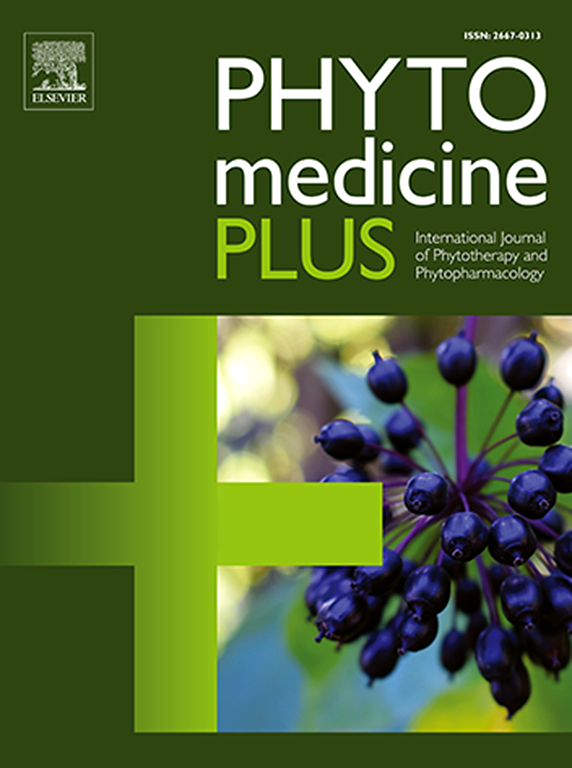用ptz诱导小鼠模型评价不同组合中药合剂的抗癫痫作用
Q3 Pharmacology, Toxicology and Pharmaceutics
引用次数: 0
摘要
背景:癫痫是一种以惊厥发作为特征的神经系统疾病。全世界有5000万至7000万人受到影响,仍然需要具有优异抗惊厥质量和更容易获得的更安全的药物。尽管药物治疗取得了进展,抗癫痫药物(AED)的副作用仍然是一个值得关注的问题,因为它们会降低生活质量和依从性。作为补充和替代疗法,草药正变得越来越受欢迎。方法采用剂量为120 mg/kg.b的戊四唑致小鼠癫痫模型。本研究考察了传统药用植物Withania somnifera、Matricaria recutta和Evolvulus alsinoides的抗惊厥作用,这三种植物分别被称为Ashwagandha、洋甘菊和牵牛花。将该草药与1.5%羧甲基纤维素(CMC)混合,以不同剂量和组合给药。结果在ptz诱导的小鼠痫性发作模型中,研究表明,白屈菜、苦参和苦参具有明显的抗惊厥作用。3种组合的最高潜伏期为168.25±30.4s,癫痫发作时间为3.82±7.65 s本文章由计算机程序翻译,如有差异,请以英文原文为准。
Evaluation of antiepileptic properties of herbal mix of different combinations by PTZ-induced mouse model
Background
Epilepsy is a neurological disorder characterized by convulsive seizures. Between 50 and 70 million people worldwide are impacted, and safer medications with superior anticonvulsant qualities and greater accessibility are still needed. Antiepileptic drug (AED) side effects continue to be a significant concern despite advances in pharmacotherapy, as they can lower quality of life and adherence. Herbal medicines are becoming more and more popular as complementary and alternative therapies as a result.
Methods
Using a mouse seizure model caused by PTZ (Pentylenetetrazole) of dose 120 mg/kg.b.wt, this study examines the anticonvulsant efficacy of a traditional medicinal plant called Withania somnifera, Matricaria recutita and Evolvulus alsinoides which are commonly called as Ashwagandha, Chamomile and Morning glory respectively. The herb was mixed with 1.5 % Carboxymethyl cellulose (CMC) and given to mice with various dosage levels and in combination.
Results
The study demonstrates that Evolvulus alsinoides, Withania somnifera, and Matricaria recutita, possesses significant anticonvulsant properties in a PTZ-induced seizure model in mice. Combination of all three showed highest latency of 168.25 ± 30.4s and seizure period of 3.82 ± 7.65 s
求助全文
通过发布文献求助,成功后即可免费获取论文全文。
去求助
来源期刊

Phytomedicine Plus
Medicine-Complementary and Alternative Medicine
CiteScore
3.70
自引率
0.00%
发文量
178
审稿时长
81 days
期刊介绍:
 求助内容:
求助内容: 应助结果提醒方式:
应助结果提醒方式:


